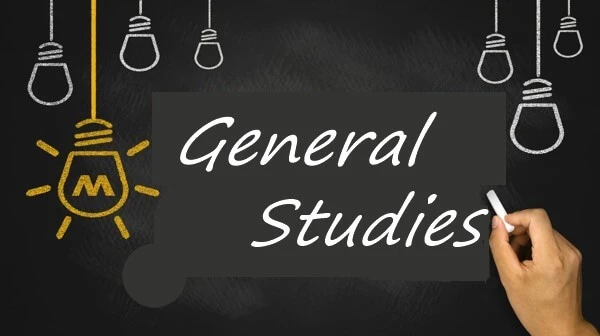Covalent Bonding Books
Author: Steven Zumdahl, Susan Zumdahl, Donald DeCoste
School: University of Ibadan
Department: Science and Technology
Course Code: CHE127, CHE157, CHE177, CHE257, CHE327, CHE428
Topics: Atom, Molecule, Ion, Stoichiometry, chemical reaction, gas, thermochemistry, atomic structure, periodicity, bonding, covalent bond, orbital, liquid, solid, solution, chemical kinetics, chemical equilibrium, acid, base, acid-base equilibria, solubility, Complex Ion Equilibria, Spontaneity, Entropy, Free Energy, Electrochemistry, Nucleus, Representative Element, transition metal, coordination chemistry, organic molecule, biological molecule, Dalton’s Atomic Theory, Periodic Table, Atomic Mass, mole, molar mass, chemical equation, stochiometric calculation, Precipitation Reaction, acid-base reaction, oxidation-reduction reaction, gas law
Author: Robert thornton morrison, Robert Neilson Boyd
School: University of Ibadan
Department: Science and Technology
Course Code: CHE276
Topics: Organic Chemistry, chemical bond, quantum mechanics, atomic orbitals, electronic configuration, Pauli exclusion principle, molecular orbitals, covalent bond, hybrid orbitals, intramolecular forces, bond dissociation energy, homolysis, heterolysis, bonds polarity, melting point, intermolecular force, boiling point, solubility, acids, bases, isomerism, activation energy, hydrocarbons, methane structure, oxidation, heat of combustion, chlorination control, relative reactivity, reaction mechanisms, chlorination, free radicals, chain reactions inhibitors, transition state, molecular formula, chlorofluorocarbons, qualitative elemental analysis, quantitative elemental analysis, Alkene, free-radical substitution, ethane structure, Higher alkanes, alkyl groups, industrial source, Grignard reagent, halogenation, free radical stability, combustion, greenhouse effect, pyrolysis, cracking, alkane analysis, stereochemistry, stereoisomers, isomer number, tetrahedral carbon, optical activity, plane-polarized light, polarimeter, specific rotation, enantiomerism, chirality, chiral center, enantiomers, racemic modification, Diastereomers, meso structures, conformational isomers, optical purity, Alkyl halides, Nucleophilic aliphatic substitution, homolytic chemistry, heterolytic chemistry, Carbocations, Carbocations structure, alkyl halides analysis, alcohols, ethers, alcohol nomenclature, carbohydrates fermentation, Ethanol, alcohol preparation, alcohol reaction, alcohol oxidation, ethers preparation, Secondary Bonding, carbon-carbon double bond, Unsaturated hydrocarbon, ethylene structure, Propylene, Hybridization, orbital size, butylene, Geometric isomerism, alcohol dehydration, alkene reaction, hydrogen bromide addition, Hydrogenation, Electrophilic addition, Oxymercuration-demercuration, Hydroboration-oxidation, Alkene Free-radical polymerization, allylic Nucleophilic substitution, dienes, isoprene, isoprene rule, acetylene, Cyclic Aliphatic Compounds, cyclic compound stereoisomerism, cyclic ether, crown ethers, aromaticity, Benzene, aliphatic compounds, aromatic compounds, benzene structure, Kekule structure, Benzene ring, aromatic character, polynuclear aromatic hydrocarbons, Naphthalene, Quantitative elemental analysis, Electrophilic Aromatic Substitution, Friedel-Crafts alkylation mechanism, naphthalene electrophilic substitution, Aromatic-Aliphatic Compounds, Arenes, Spectroscopy, mass spectrum, electromagnetic spectrum, nuclear magnetic resonance spectrum, coupling consonants, chemical shift, aldehydes, ketones, Cannizaro reaction, Grignard reagents addition, Tetrahydropyranyl ethers, Iodoform test, Carboxylic Acids, Grignard synthesis, Dicarboxylic acids, acid chlorides, acid anhydrides, amides, esters, Transesterification, Aldol condensation, Wittig reaction, Crossed Claisen condensation, halides, ammonolysis, amide Hofmann degradation, Heterocyclic amines
Principles and Reactions, Seventh Edition
Author: William Masterton, Cecile Hurley, Edward Neth
School: University of Ilorin
Department: Science and Technology
Course Code: CHM101
Topics: Matter, Measurement, Atom, Molecule, Ion, Stoichiometry, Reactions in Aqueous Solution, Gas, Electronic Structure, Periodic Table, Covalent Bonding, Thermochemistry, Liquid, Solid, Solution, Rate of Reaction, Gaseous Chemical Equilibrium, Acid, Base, Equilibria in Acid-Base Solutions, Complex ion, Precipitation Equilibria, Spontaneity of Reaction, Electrochemistry, Nuclear Reactions, Complex Ions, Coordination Compounds, Metal, Nonmetal, Organic Chemistry, Organic Polymers
Concise Inorganic Chemistry, 5th edition
Author: JD Lee
School: University of Ilorin
Department: Science and Technology
Course Code: CHE127, CHE227
Topics: atomic structure, bonding, periodic table, ionic bond, covalent bond, metallic bond, coordination bond, hydrogen, hydride, alkali metal, alkaline earth metal, chalcogen, group 2 element, group 13 element, S-block element, P-block element, group 14 element, group 15 element, group 16 element, halogen, group 17 element, halogen oxide, noble gas, transition element, scandium group, titanium group, vanadium group, chromium group, manganese group, iron group, cobalt group, nickel group, copper group, zinc group, Bohr theory, Pauli exclusion principle, atomic spectra, Hund rule, solubility, conductivity, lattice energy, stochiometric defect, schottky defect, Lewis theory, octet rule, sidgwick-powell theory, VSEPR theory, isoelectronic principle, Heisenberg uncertainty principle, radial function, angular function
Author: John Olusina Obimakinde, Samuel Oluwaseun Obimakinde
School: WAEC, JAMB & POST UTME
Department:
Course Code: CHEMISTRY
Topics: Chemistry Calculations, Masses and Formulae, Relative Atomic and Molecular Masses, Mass Percentage Composition, Valency, Chemical Formula, Empirical and Molecular Formulae, Reduced Mass, Chemical Reaction, Stoichiometry, Mole, Chemical Equations, Reaction Stoichiometry, Chemical Laws, Redox Reactions, IUPAC Nomenclature, Oxidation Number, Redox Equations, IUPAC Nomenclature of Inorganic Substances, Atomic Structure, Chemical Bonding, Dalton’s Atomic Theory, Wave-Particle Duality of Matter, Uncertainty Principle, Ionization Energy, Ionic Bond, Lattice Energy, Covalent Bond, Heat of Reaction, Dipole Moment, Formal Charge, The Gaseous State, Gas Pressure, Gas Laws, Critical Constants of Gases and Equations of State for Real Gases, Reduced State Properties, Gas Density, Gas Stoichiometry, Molar Volume of Gases, Relative Vapour Density, Gas diffusion, Mole Fraction, Kinetic Theory of Gases, The Solid and Liquid States, Vapour Pressure, Change of State, Density of Solids, X-Ray Crystallography, Determination of Viscosity of Liquids from Stokes’ Law, Surface Tension, Properties of Solutions, Concentration, Molality, Solubility, Solubility Product, Colligative Properties of Solutions, Conductance of Solutions, Quantitative Analysis, Volumetric Analysis, Gravimetric Analysis, Thermodynamics, Calorimetry, Heat (Enthalpy Change) of Physical Change, Heat (Enthalpy Change) of Reaction, Heat Capacities of Gases, Thermodynamics of Solutions, The First Law of Thermodynamics, The Second Law of Thermodynamics, Efficiency, Electrochemistry, Electrochemical Cells, Electrolysis, Chemical Equilibria, Le Chatelier’s Principle, Position of Equilibrium, Equilibrium Constant, Reaction Quotient, Acid-Base Equilibria, Acid Ionization Constants, Base Ionization Constants, Water Autoionization Constant, Hydrogen Ion Concentration, Buffer Solutions, Salts, Chemical Kinetics, Rates of Reactions, Rate Law, Nuclear Chemistry, Radioactivity, Nuclear Reactions
33 Years NEET-AIPMT Chapterwise - Topicwise Solutions Chemistry
Author: MTG Editorial Board
School: International Exams
Department:
Course Code: NEET, AIPMT
Topics: chemical combination laws, Dalton's atomic theory, atomic masses, molecular mass, empirical formula, molecular formula, chemical reactions, stoichiometry, atomic number, isotopes, isobars, Heisenberg uncertainty principle, quantum numbers, Pauli exclusion, Hund's rules, atom electronic configuration, ionic radii, ionization enthalpy, electron gain enthalpy, electronegativity, valence, valence electrons, chemical bonding, molecular structure, ionic bond, covalent bond, Lewis structure, valence bond theory, VSEPR theory, Boyle's law, Charles's law, Gay Lussac's law, Avogadro's law, thermodynamics, equilibrium, Redox reaction, hydrogen, Alkali earth metals, alkaline earth metals, organic chemistry, hydrocarbons, alkanes, alkenes, alkynes, aromatic hydrocarbons, Benzene, aromacity, environmental chemistry, solid state, solutions, electrochemistry, chemical kinetics, surface chemistry, coordination compounds, Haloalkanes, alcohols, phenols, ethers, Aldehydes, ketones, carboxylic acids, amines, cyanides, Diazonium, salts, biomolecules, carbohydrates, proteins, hormones, vitamins, nucleic acids, DNA, RNA, polymers
Schaum's Outline of College Chemistry ,Ninth edition
Author: Jerome Rosenberg, Lawrence Epstein, Peter Krieger
School: Ahmadu Bello University, Zaria
Department: Science and Technology
Course Code: CHEM131
Topics: temperature, temperature units, atomic mass, molar mass, molecular mass, relative atomic mass, emperical formula, chemical formula, limiting reactant, chemical reactions, gas, gas volume, pressure, standard atmospheric pressure, pressure measurement, gas law, Boyle's law, Charles's law, Gay-lussac law, combined gas law, ideal gas, ideal gas law, kinetic theory, avogardo hypothesis, molar volume, gas volume, gas stoichiometry, thermochemistry, heat, heat capacity, calorimetry, energy, enthalphy, thermochemical reactions, atomic structure, particle, waves, Pauli principle, Periodic law, Aufbau principle, Electron configuration, Atomic radii, ionization energy, electron affinity, chemical bonding, molecular structure, ionic compounds, covalence, valence-bond representation, molecular-orbital representation, π BONDING, MULTICENTER π BONDS, coordination compounds, isomerism, solid, liquid, crystals, crystal forces, Ionic Radii, oxidation-reduction, oxidation number, oxidizing agents, reducing agents, ionic notation, balancing equations, concentration, concentration scales, concentration units, dilution, volumetric standard solutions, vapor pressure lowering, freezing-point lowering, boiling-point lowering, Boiling-point elevation, osmotic pressure, Law of distribution, isomerism, functional groups, organic chemistry, biochemistry, thermodynamics, chemical equilibrium, Equilibrium constant, Le Chatelier's principle, acid, base, hydrolysis, buffer solution, indicators, weak polyprotic acids, tittration, complex ions, coordination complexes, electrochemistry, solubility product, electrical units, electrolysis, voltaic cells, standard half-cell potentials, free energy, Nonstandard potentials, rate of reactions, rate constant, energy of activation, Nuclear process, Binding energy, nuclear equations, radiochemistry
Author: Theodore Brown, Eugene LeMay, Bruce Bursten, Catherine Murphy, Patrick Woodward, Matthew Stoltzfus
School: Federal University of Agriculture, Abeokuta
Department: Science and Technology
Course Code: CHM101
Topics: matter, energy, atom, molecule, ion, chemical reaction, Reaction Stoichiometry, thermochemistry, electronic structure, chemical bonding, molecular geometry, bonding theorues, gases, liquid intermolecular forces, solids, solutions, chemical kinetics, Chemical Equilibrium, Acid–Base Equilibria, Aqueous Equilibria, chemical thermodynamics, electrochemistry, nuclea chemistry, transition metals, coordination chemistry, organic chemistry, biological chemistry, chemistry of life
Solution to Exercise Chemistry the central science ,12th edition
Author: Roxy Wilson
School: Federal University of Agriculture, Abeokuta
Department: Science and Technology
Course Code: CHM101
Topics: matter, energy, atom, molecule, ion, chemical reaction, Reaction Stoichiometry, thermochemistry, electronic structure, chemical bonding, molecular geometry, bonding theories, gases, liquid intermolecular forces, solids, solutions, chemical kinetics, Chemical Equilibrium, Acid–Base Equilibria, Aqueous Equilibria, chemical thermodynamics, electrochemistry, nuclea chemistry, transition metals, coordination chemistry, organic chemistry, biological chemistry, chemistry of life
Materials Science and Engineering An Introduction,10th edition
Author: William Callister, David Rethwish
School: Federal University of Technology, Owerri
Department: Engineering
Course Code: ENG207, ENG208
Topics: atomic structure, interatomic bonding, crystalline solids, crystals, atomic bonding, diffusion, dislocation, strengthening mechanisms, failure, mechanical properties, phase diagrams, phase transformations, alloy, ceramic, polymer, corrosion, degradation, composites, polymer synthesis, polymer processing, oxidation, electrical properties, magnetic properties, optical properties, thermal properties, unit cell, density computation, Polymorphism, Allotropy, Crystallographic points, Crystallographic directions, polycrystalline materials, anisotropy, X-ray diffraction, plastic deformation, point defects, atomic vibration, fick's law, Stress–Strain Behavior, Anelasticity, fatigue, creep, solubility limit, phase equilibria
Departments

Administration, Social and Management science

Agriculture and Veterinary Medicine

Arts and Humanities

Education

Engineering

General studies

Law

Medical, Pharmaceutical and Health science

Science and Technology